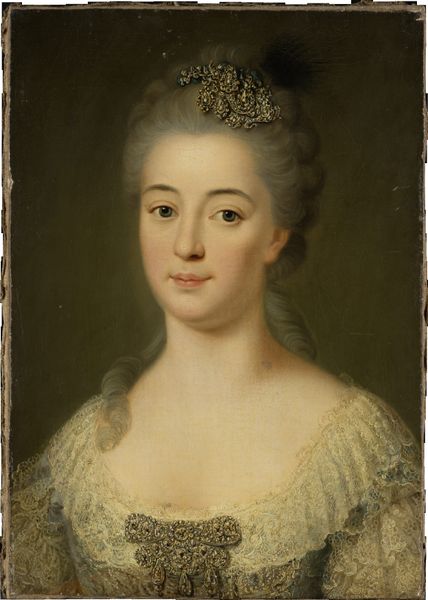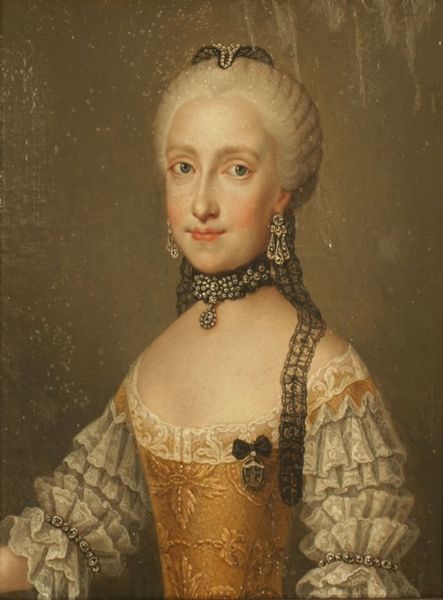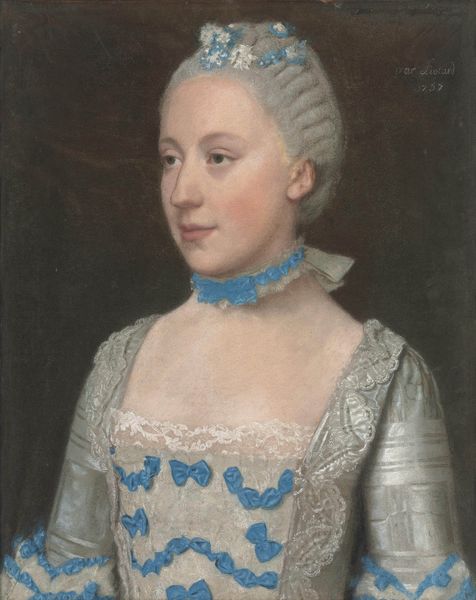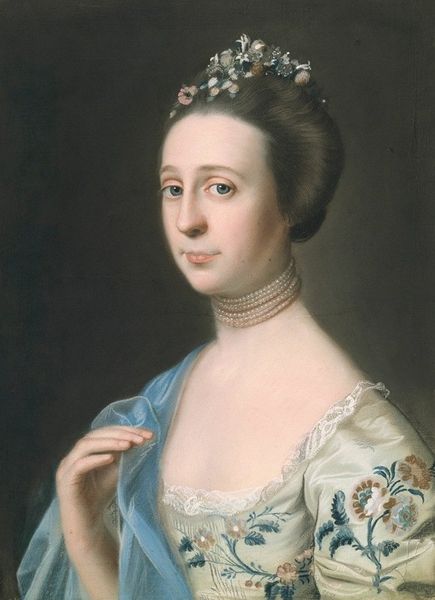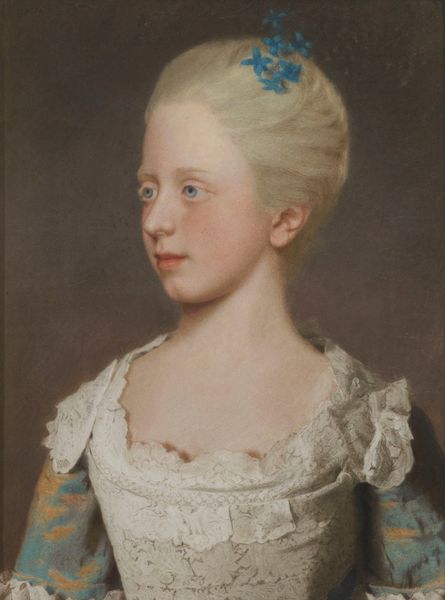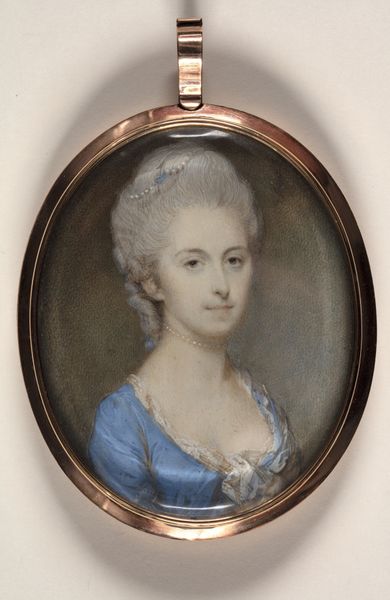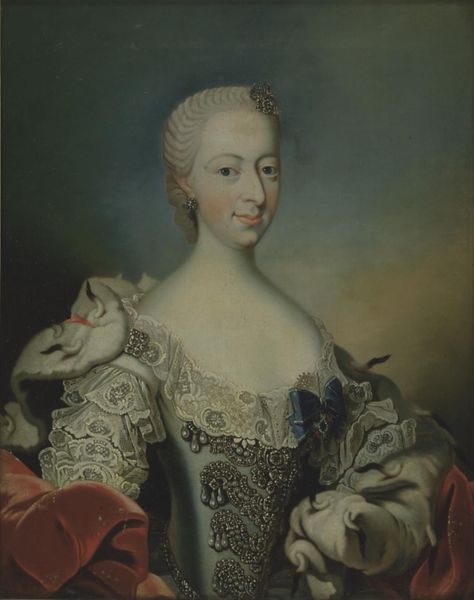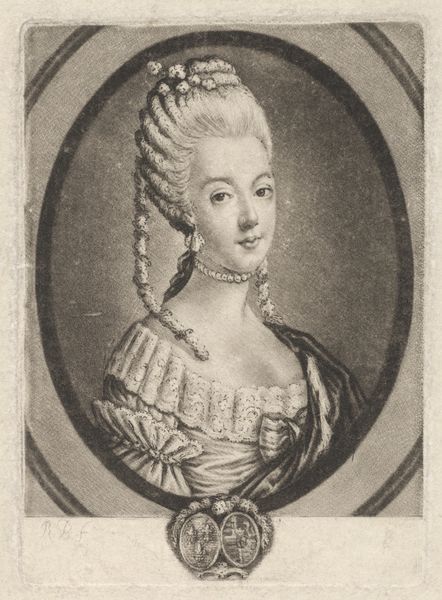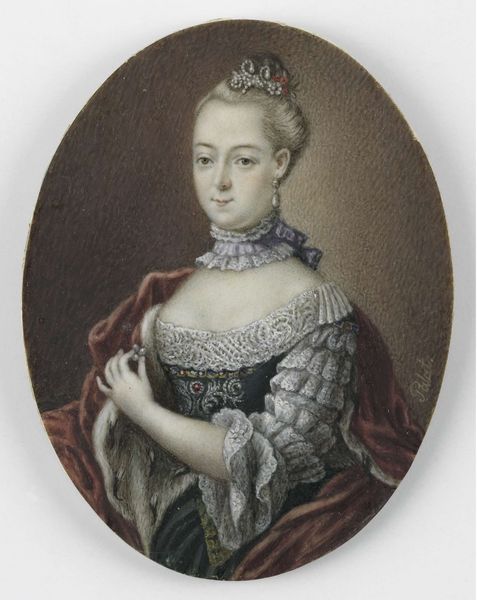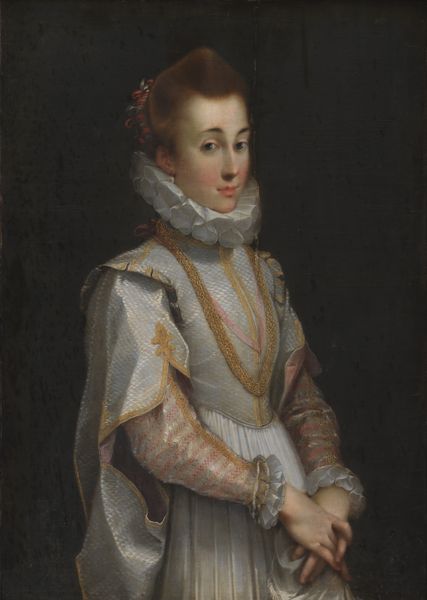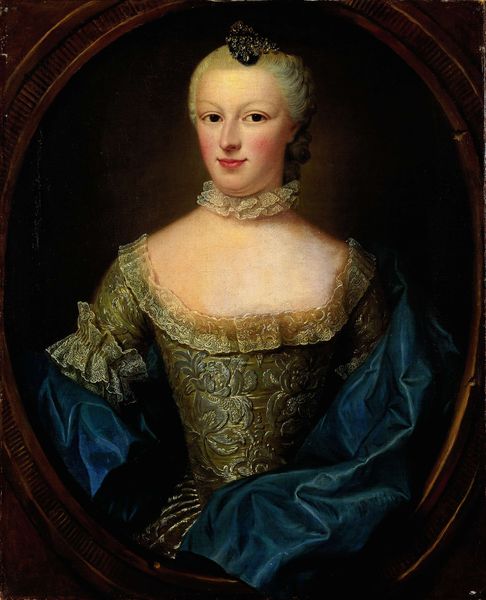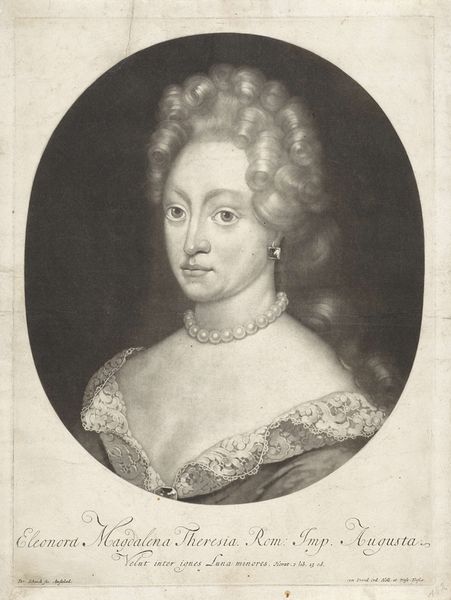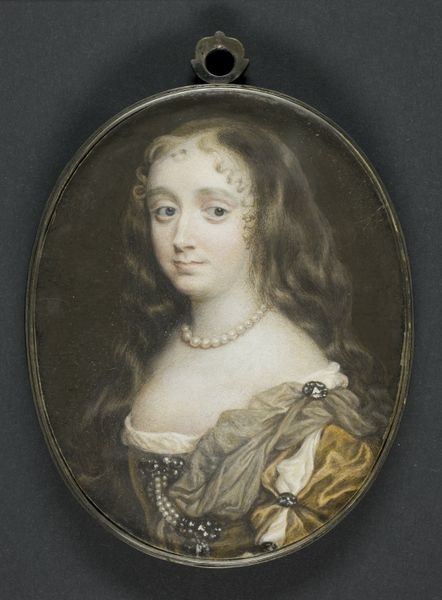
painting, paper, pastel
portrait
painting
paper
pastel
rococo
Curator: Looking at this intriguing work, we have Peder Als’s rendering of “Dronning Juliane Marie," created sometime between 1741 and 1776. It's currently housed here at the SMK, Statens Museum for Kunst. Editor: There’s an arresting stillness to this portrait. The soft pastel hues and smooth gradations of color contribute to its almost ethereal quality. It feels like a fleeting moment captured. Curator: Absolutely. Als, deeply entrenched in the Danish court, sought to visually manifest her royal authority while simultaneously engaging in contemporary European trends for aristocratic portraiture, especially the Rococo style that really emphasized elegance and grace through aesthetic choices such as pastel. Editor: The use of pastel on paper adds a softness that enhances the sense of delicacy. And notice the composition. The figure is centered, symmetrical, reinforcing the regal subject. Curator: Indeed, she wasn’t actually queen consort but rather queen dowager and regent for her son, King Christian VII, a role laden with political significance and that undoubtedly impacted the construction and viewing of the work then, and now. It is more than a portrayal of a woman; it is an active symbol of governance. Editor: Beyond its socio-political implications, one can analyze the form through careful consideration of line, color, and light, allowing for a layered interpretive approach to understanding artistic choices and the artwork’s essence. The muted color scheme creates harmony and serenity. Curator: And we also shouldn’t ignore how it might have functioned as a form of political messaging—carefully crafted imagery, designed to reinforce a specific impression of Juliane Marie's reign and power during turbulent times for the Danish crown. Editor: For me, the artwork, through its formal elements, succeeds in projecting serene command, reflecting the ethos of enlightened absolutism, through both composition and painterly technique. Curator: Seeing it contextualized in the era, we recognize how much this image was created not just as art but as a critical representation of power. Editor: And seen through the lens of aesthetics, it is a subtle, elegant orchestration of color, form and light to elicit both contemplative repose and perhaps even reverence.
Comments
No comments
Be the first to comment and join the conversation on the ultimate creative platform.
